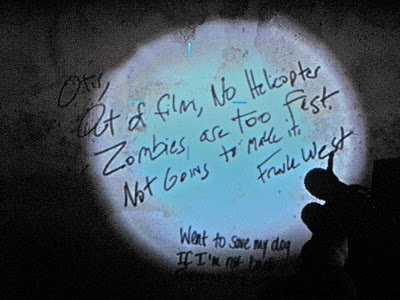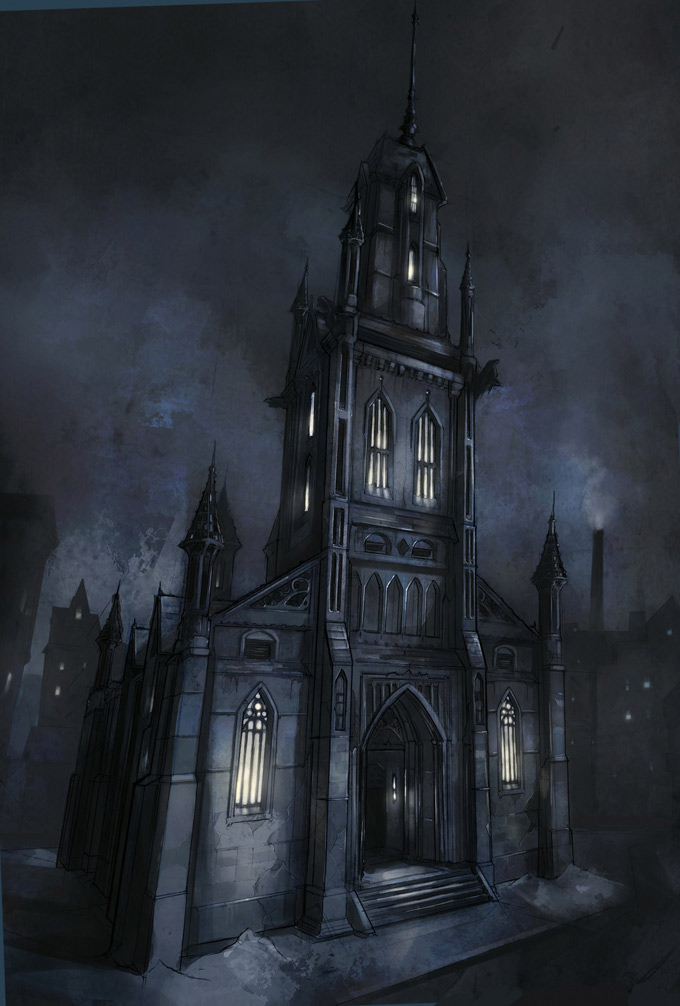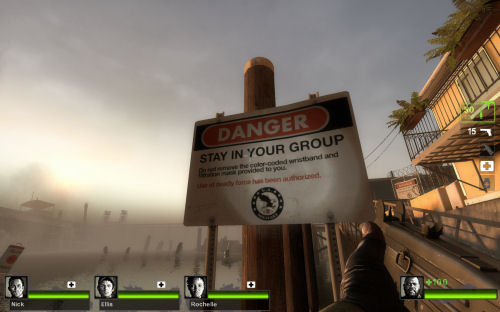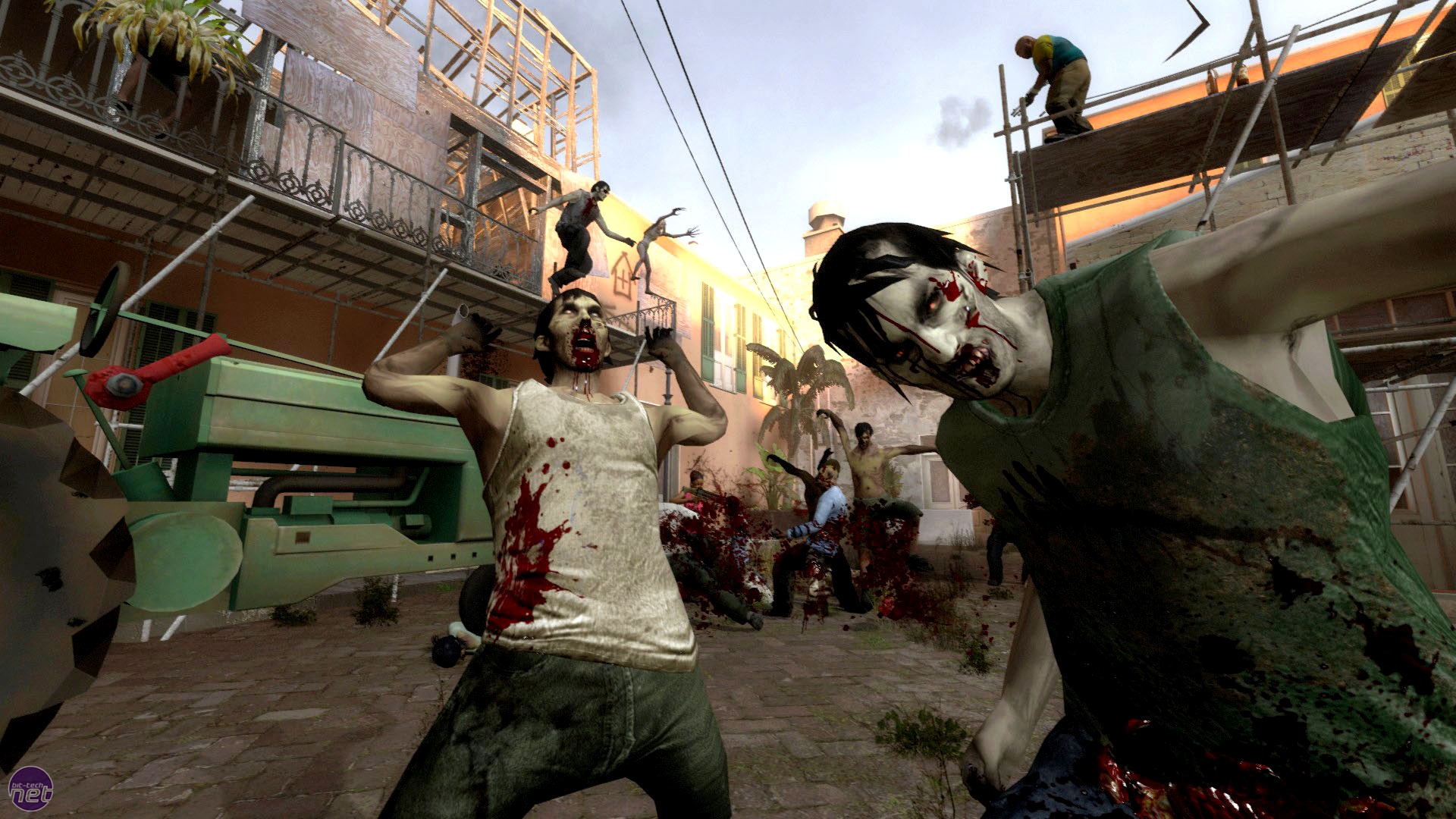In horror, we can can usually count on one component - blood. Violence and gore is not featured in every horror themed video game or film, but it can be used to create a successful horror atmosphere.
Dead Space (2008) shows several examples of how to create a successful horror atmosphere using blood. I have played two thirds of the game so I can provide my own thoughts and feelings as feedback and evaluation. Below I have selected sections of the game where I noticed effective uses of blood to create atmosphere.
 |
| http://www.gogaminggiant.com/wp-content/uploads/2009/10/16.jpg | | |
Having just encountered the unknown alien race known as the necromorph and ran to a safe location to avoid a very gruesome death, I was presented with my first weapon. Having a rough visual idea of what the necromorph look like, I noticed a message on the board in front of me reading 'cut off their limbs'. The first time I saw this message, feelings of anxiety and fear began to manifest themselves because I was now worried what I was coming up against, can the enemy re-grow their limbs and is that eventually going to be my blood on the wall?
The dark shade of red used for the blood suggests decay, which means whoever wrote this message has been dead for quite some time, making me think the necromorph race has probably taken over the ship by now, which again raised feelings of fear and anxiety.
 |
| http://metavideogame.files.wordpress.com/2008/12/concept_desolate_hallway_download_021208.jpg |
Moving through the corridors of the Ishimura, I came across this doorway. Moving from a darker shade of red to a brighter tonal red, the decay rate flows from old to new, telling me that whatever or whomever has died, it was not that long ago. This evokes feelings of uncertainty and puts me in a hesitant mood because my mind is telling me there is something through that doorway and it is not friendly again, inspiring feelings of fear and anxiety.
 |
| http://memberfiles.freewebs.com/01/26/63792601/photos/Dead-space-/dead_space4.jpg |
Continuing along the hallways there were dead bodies everywhere, blood splashed all over the floor and walls, guts spilled out on the stairs and limbs on the corpses missing. With the blood everywhere my feelings of anxiety and fear were raising every second. The effective use of blood here was the quantity, the more blood I saw the more worried I became. This use of blood creates atmosphere successfully here because the colour red evokes the most passionate of our emotions and feelings rage, love and stress however, here it promotes fear. Fear, like rage and love are some of our most unsteady feelings and emotions, the slightest harassment of these can tip us over the edge and can sometimes be hard to steady out our reactions and thoughts. For example, If I was to watch three or four paranormal-based horror films late I night, I will be constantly looking over my shoulder because the more that I watch, the more fearful I become which in turn, carries on until I head to bed for the evening or go to the toilet, the feeling of fear is still there because the images of blood, scary moments and horror characters are still in my head and will not vanish until at least the next morning.
Using these sources as inspiration, I decided to depict my own horror scene using blood to depict a successful horror atmosphere.
The Design Process
I started by creating a square shaped door, using the sci-fi theme of Dead Space for the design style of my door. Next, I extruded a 't' shape in the door to depict the blue neon lights. After that I divided the door up into sections so I could later create a pattern in the door. Finally, extruded one of the squares on the left hand side to depict a password access screen.
Next I corrected the 't' shape of the door light so that it was one whole shape. After this I started to search for a screen-shot of a password screen online. Through trial and error, I kept searching until I found an image that blended with the rest of the colours on my door.
To complete my door I created grooves in the door by doubling the sectioned lines of my door and shaped them accordingly. Finally, I unwrapped the door and performed the texturing in Adobe Photoshop.
Using my previously learned skills in shadowless lighting, I manipulated the incandescence for the lighting on the door, ensuring
the tone of blue stood out from the primary colour of the door. I then moved onto the most important factor - the blood. Using a downloaded brush pack from an online source (it was free!), I created blood spatter patters on the door using the
pre-set brush shapes and using a transparent eraser to manipulate and create my own patterns of blood. This
scene depicts a kill at close range in front of the door therefore, it was important to maintain a sense of realism by making sure my blood patterns were not repeated and that there was not a ridiculous quantity of blood used.
A final touch was needed, so I placed a hand print on the screen. To avoid a common portrayal of blood on surfaces, I decided not to smear the hand print in a particular
direction as I have seen far too many times before in films and video games and did not want to
create that which has been done already to maintain a sense of originality in my works. I decided not to add any environmental
lighting as I feel it would draw focus away from the lights on the door, making the contrasting effects of the colour selections much less effective.
What relevance does this test have towards the development of my project and horror?
The relevance of this test is to develop my understanding of the effectiveness of blood in a horror scene and how it creates a successful atmosphere. The red of the blood evokes certain feelings/moods/emotions therefore, studying other colours used in horror will help me understand how other feelings/emotions/moods are inspire and thus, use these colours to depict a more successful horror atmosphere within my 3D environment. This test also helped me develop my texturing skills, as I have never experimented with blood before.












































